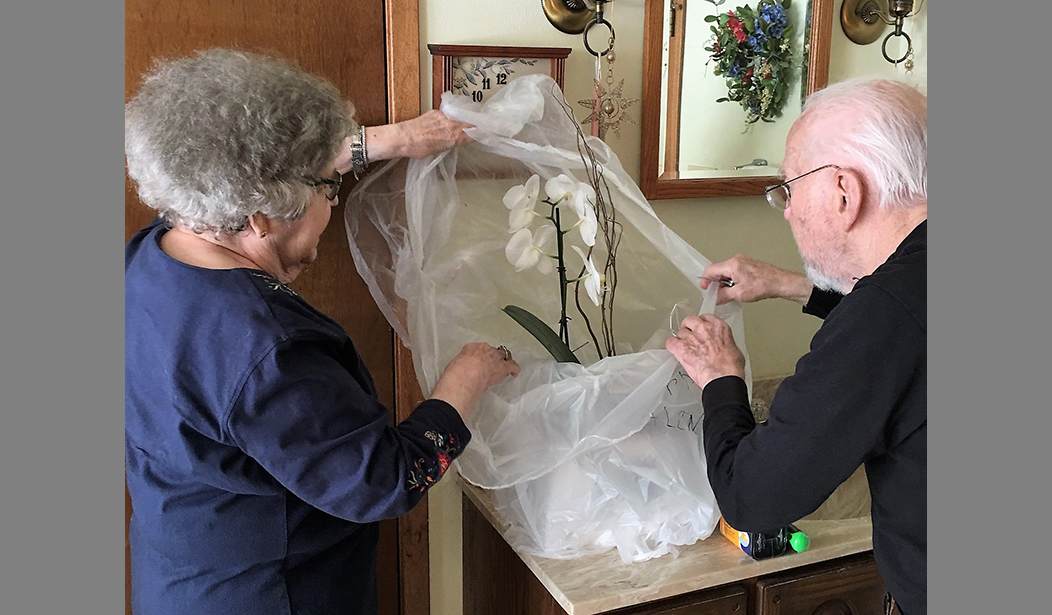Today (he wrote, belaboring the obvious) is Valentine's Day, that holiday in which Hallmark sells cards, florists sell flowers, jewelers sell jewelry, and wives get annoyed with their husbands for forgetting to buy cards, flowers, and jewelry. That's what Valentine's Day has become, but that's not how it started. It's not at all clear how the tradition, along with its association with romance, got started. Some historical events might explain parts of it:
The Catholic Church recognizes at least three different saints named Valentine or Valentinus, all of whom were martyred. One legend contends that Valentine was a priest who served during the third century in Rome. When Emperor Claudius II decided that single men made better soldiers than those with wives and families, he outlawed marriage for young men. Valentine, realizing the injustice of the decree, defied Claudius and continued to perform marriages for young lovers in secret. When Valentine’s actions were discovered, Claudius ordered that he be put to death. Still others insist that it was Saint Valentine of Terni, a bishop, who was the true namesake of the holiday. He, too, was beheaded by Claudius II outside Rome.
Because, you know, beheading just screams "romance."
As for the association with romance, there's a plausible explanation for that: Valentine's Day does happen in the early spring, after all, when over much of the landscape snows are starting to melt (not here in Alaska!) birds to sing, and the first green shoots appear, and it's the last calm spell before most European country folks of the time got involved in planting.
During the Middle Ages, it was commonly believed in France and England that February 14 was the beginning of birds’ mating season, which added to the idea that the middle of Valentine’s Day should be a day for romance. The English poet Geoffrey Chaucer was the first to record St. Valentine’s Day as a day of romantic celebration in his 1375 poem “Parliament of Foules,” writing, “For this was sent on Seynt Valentyne’s day / Whan every foul cometh ther to choose his mate.”
"Parliament of Foules (Fools)" sounds more like Congress than young souls looking for love, but that's as may be.
We are built to seek romance — love. It's a biological imperative, of course; that runs across the biological spectrum. Humans, though, are a little different; we (at least, still, the overwhelming majority of us) seek lifelong bonds, for companionship, mutual support, for children, and yes, for love. It's a part of who we are as people and has been for thousands of years — because it works. It works despite the fact that we live in a time where the very nature of romance and family is under pressure from all corners.
See Related: Planned Parenthood Claims Virginity Is a 'Completely Made-Up Concept' That Excludes 'Queer' People
And when those relationships are starting, still in that new, fresh phase, few things in the world are more exciting, more enthralling — as it was for me, in Operation Desert Storm, when I made the acquaintance of a tiny, 4'11", 110-pound First Lieutenant, Army-type, who I quickly realized had not only a will of iron but more physical and emotional courage than anyone I've ever known — I'm still married to her now, 32 years and a bunch of children and grandchildren later.
It's Valentine's Day. It's the day when we celebrate romance, love, and the people we care about most, who bring the most comfort and meaning to our lives. So, what does it all mean? For the answer, I'll direct your attention to the photo at the top of the page. There's a story behind it. On Valentine's Day of 1947, a young man, only a few months home from his Second World War service, bought a girl flowers for Valentine's Day. The young man and the girl married a month later and went on to have five children, the youngest of whom was me. That photo above, taken in 2017, is of their 70th Valentine's Day, when Dad was 92 and Mom was 87. Dad passed a month after their 71st anniversary. Mom followed eight months later. They had five children, twelve grandchildren, and fourteen great-grandchildren, and they still held hands — until the end.
Forget movies, forget romance novels; forget Hallmark, forget the florists and jewelers. That's what love looks like, folks; that's what love looks like.
As for my wife and me: We'll have a simple observation here. The professional romance brokers won't see a shekel from us; instead, we'll run down the valley to the famous Miller's Market in Houston for milkshakes. That's enough for us. Besides, for us, every day is Valentine's Day.
Enjoy your Valentine's Day, one and all. Let the people in your life know you love them. Nothing more needs to be said.















